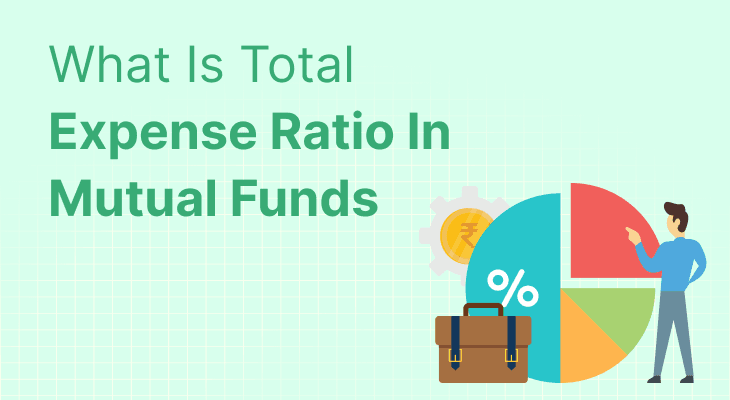The Total Expense Ratio of a mutual fund (TER) is a critical factor affecting your returns. It represents the annual fees charged by a fund house to manage your investment. Understanding the TER is essential. What is it, and why does it matter? Let’s break it down.
What Is Total Expense Ratio?
Total Expense Ratio (TER) is one of the most critical metrics every Indian mutual fund investor should understand. It tells you how much you’re paying annually for the management of your investment. TER is expressed as a percentage of a fund’s average assets under management (AUM).
In India, where mutual fund investments have surged with a 15.5% CAGR over the last five years. knowing what TER is—and how it affects your returns—is essential. Whether you’re investing through SIPs or lump sum, a higher TER can silently eat into your profits. Therefore, understanding this cost is crucial for informed decision-making.
Why TER Matters: Impact on Returns
The total expense ratio of a mutual fund in India directly reduces your returns. A 1% higher TER on a ₹5 lakh investment at 12% returns over 10 years cuts your corpus by ₹1.5 lakh, per Value Research. Lower TERs, common in passive funds like index funds (0.1-0.5%), preserve more wealth. In 2024, passive funds’ AUM was ₹11.2 lakh crore, per AMFI, driven by cost-conscious investors. In addition, high TERs in active funds must justify alpha, as only 40% beat benchmarks, per S&P SPIVA.
How Is TER Calculated?
TER includes all recurring expenses involved in running a mutual fund. Here are the main components:
- Management Fees: Paid to the fund manager for overseeing investments.
- Administrative Costs: Covers legal, audit, and registrar services.
- Distribution Expenses: Costs related to marketing and agent commissions.
The formula is: TER = (Total Expenses ÷ Average AUM) × 100
For instance, if a mutual fund incurs ₹1 crore in annual expenses on an AUM of ₹200 crore, the TER is 0.5%. Importantly, these costs are deducted daily from your fund’s NAV (Net Asset Value), which means you never see them as direct charges—but they affect your returns silently.
Tips for Choosing Mutual Funds with the Right TER:
- Compare Direct vs Regular Plans: Direct plans always have a lower Total Expense Ratio. Consider switching if you can manage your investments online.
- Don’t Chase Low TER Blindly: A fund with slightly higher TER but better historical performance could be a better option. Always weigh cost against performance.
- Watch Fund Size: Larger funds tend to have economies of scale, resulting in a lower TER. However, performance should still be your top criterion.
- Stay Updated: Fund houses revise TERs occasionally. You can find updated TER details on the SEBI website or through your fund’s fact sheet.
Conclusion:
In conclusion, the total expense ratio of a mutual fund in India shapes your net returns—lower TERs mean more wealth. A lower TER can significantly improve long-term gains, especially when investing large amounts or for extended periods. Ready to invest cost-effectively? Explore more fund insights now!
– Ketaki Dandekar (Team Arthology)
Read more about Total Expense Ratio of a Mutual Fund here – https://www.investopedia.com/ter.asp
